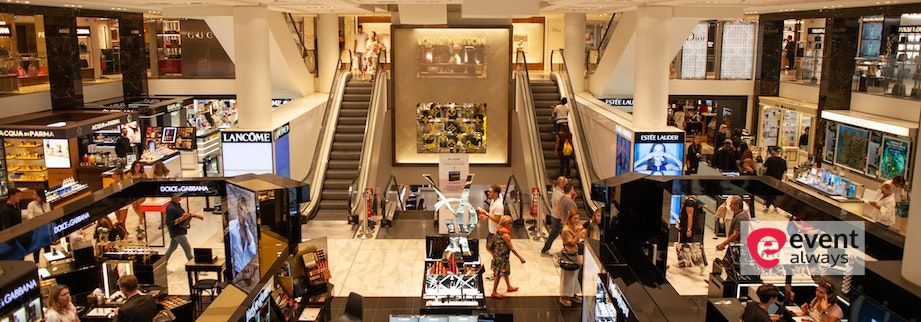Welcome to the beginner’s guide to trade show marketing, where we’ll explore the essential strategies and tactics to help you navigate the exciting world of trade shows. Trade shows are powerful marketing events that provide unique opportunities to showcase your products or services, connect with potential customers, and build brand awareness. Whether you’re a small business owner or a marketing professional looking to enhance your trade show presence, this guide will equip you with the knowledge and insights to make the most of these valuable marketing platforms.
Understanding Trade Show Marketing
Trade show marketing involves the strategic planning and execution of promotional activities to maximize your presence and impact at trade shows. It encompasses various aspects, including booth design, pre-show promotion, lead generation, and post-show follow-up. By implementing effective trade show marketing strategies, you can attract attention, engage attendees, and ultimately drive business growth.
The Benefits of Trade Show Marketing
Trade show marketing offers several key benefits for businesses of all sizes. Let’s explore some of the advantages:
- Direct Engagement: Trade shows provide a unique opportunity to engage directly with your target audience, allowing you to showcase your products or services and build meaningful connections.
- Brand Exposure: By participating in trade shows, you can increase your brand’s visibility and exposure, reaching a wider audience within your industry and beyond.
- Lead Generation: Trade shows offer a fertile ground for lead generation, enabling you to capture valuable contact information from potential customers who have expressed interest in your offerings.
- Market Research: Attending trade shows allows you to gather insights about your industry, competitors, and market trends, helping you refine your strategies and stay ahead of the curve.
- Networking Opportunities: Trade shows bring together industry professionals, influencers, and thought leaders, offering valuable networking opportunities to establish connections and partnerships.
Setting Clear Goals
Before diving into trade show marketing, it’s essential to set clear goals that align with your overall marketing objectives. Consider what you hope to achieve from participating in trade shows. Are you looking to generate leads, increase brand awareness, launch a new product, or strengthen relationships with existing customers? Defining your goals will guide your strategies and help measure the success of your trade show efforts.
Selecting the Right Trade Shows
Choosing the right trade shows to participate in is crucial for maximizing your return on investment. Research industry-specific trade shows and evaluate their attendee demographics, reputation, and relevance to your business. Consider factors such as the number of attendees, exhibitor fees, and the overall reputation of the event. Selecting the most suitable trade shows will ensure that you reach your target audience and achieve your marketing objectives.
Preparing for a Trade Show
Crafting a Compelling Booth Design
Your booth design plays a critical role in attracting attention and standing out from the competition. Consider the following elements when creating your booth design:
- Eye-Catching Graphics: Use bold and visually appealing graphics that align with your brand identity and clearly communicate your message.
- Engaging Displays: Incorporate interactive elements such as product demonstrations, digital displays, or interactive games to engage attendees.
- Effective Signage: Utilize clear and concise signage that highlights key information about your products or services.
Pre-Show Promotion
Promoting your presence before the trade show is vital for generating buzz and attracting visitors to your booth. Here are some effective pre-show promotion strategies:
- Email Marketing: Send targeted emails to your existing customer base and prospects, inviting them to visit your booth and offering incentives to stop by.
- Social Media Campaigns: Leverage social media platforms to create excitement about your participation, share teasers, and engage with potential attendees.
- Press Releases: Issue press releases announcing your participation in the trade show, highlighting any new product launches or special promotions.
Staff Training and Preparation
Equipping your team with the necessary skills and knowledge is essential for a successful trade show experience. Provide comprehensive training to your booth staff, ensuring they understand your products or services, can answer common questions, and engage attendees effectively. Encourage them to be friendly, approachable, and proactive in initiating conversations with visitors.
FAQ’s
Q: How can I attract more visitors to my trade show booth?
A: There are several ways to attract visitors to your booth. Offer interactive experiences, host giveaways or contests, provide valuable educational content, and create visually appealing displays that grab attention.
Q: How important is follow-up after a trade show?
A: Follow-up is crucial to capitalize on the connections made at the trade show. Promptly reach out to leads, nurture relationships, and deliver on any promises made during the event.
Q: How can I measure the success of my trade show marketing efforts?
A: Set specific metrics aligned with your goals, such as the number of leads generated, sales closed, or brand impressions made. Use lead tracking systems, customer surveys, and post-show analytics to measure your performance.
Q: What should I bring to a trade show?
A: Essential items to bring include promotional materials, business cards, product samples, branded giveaways, signage, and any necessary equipment or technology for demonstrations.
Q: How can I stand out among other exhibitors?
A: Differentiate yourself by offering unique experiences, leveraging creative booth design, providing value-added content or services, and fostering memorable interactions with attendees.
Q: What are some budget-friendly trade show marketing strategies?
A: Consider options such as shared booths, strategic partnerships with complementary businesses, utilizing social media and digital marketing, and focusing on targeted pre-show promotion to optimize your budget.

